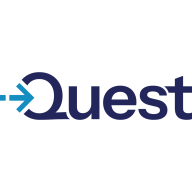

Red Hat Ansible Automation Platform and KACE Systems Management Appliance are strong contenders in IT management solutions. Red Hat Ansible holds a distinct edge due to its flexible deployment and agentless architecture.
Features: Red Hat Ansible Automation Platform utilizes an agentless architecture, enhancing ease of use by eliminating client installation requirements. The YAML-based syntax facilitates straightforward configuration, while the platform enjoys robust community support with a wide range of plugins and modules. KACE Systems Management Appliance excels in device inventory management, offering features like software distribution, asset management, and comprehensive patch management, which are especially beneficial in handling large-scale environments.
Room for Improvement: Red Hat Ansible can improve scalability when managing numerous servers via SSH connections and enhance its documentation and GUI compatibility. KACE Systems Management Appliance requires improvements in scalability for vast node numbers and needs easier configuration processes, particularly in patch management and automation. A simplified user interface could also make handling complex IT environments more efficient.
Ease of Deployment and Customer Service: Red Hat Ansible Automation Platform permits flexible deployment across hybrid, on-premises, private, and public clouds. It benefits from substantial community support and comprehensive documentation, offering diversified technical support. KACE Systems Management Appliance primarily supports on-premises environments, with cloud integration appearing limited, despite generally positive evaluations of its technical support.
Pricing and ROI: Red Hat Ansible Automation Platform offers a cost-effective open-source solution with community editions but requires licenses for enterprise features and support, which can be costly. The ROI is evident in efficiency and time saved in configuration management. KACE Systems Management Appliance, though pricier, justifies its cost through comprehensive endpoint management features, offering competitive pricing models for enhanced operational efficiency in large enterprise environments.
The return on investment is seen in the quick access to information, good inventory management, and efficient systems management.
I would rate the customer support for Quest KACE Systems Management Appliance (SMA) as a 10.
The customer service is very good, providing quick customer support in Spanish.
I have not escalated any questions to the Red Hat support team regarding Red Hat Ansible Automation Platform, as their modules are professional and complete.
The Ansible sales and technical support services need significant improvement.
The product is very scalable as it supports 10,000 thousand endpoints with just one appliance.
We have outgrown the size of one KACE appliance and are now running two.
Ansible can face scalability issues, such as limitations when trying to scale up infrastructure.
The stability of Red Hat Ansible Automation Platform is excellent, deserving a 10 out of 10 rating.
Currently, we have to go into each org to deploy applications when we need them all across the university.
The user interface needs improvement as customers have mentioned they do not like the interface since it is not an SMA-based interface.
Red Hat Ansible Automation Platform could improve by creating modules for upcoming AI and ML tech stacks.
Both Event-Driven Ansible and cloud management platform features are crucial improvements needed.
More detailed dashboards would be beneficial because there is a lack of dashboards on Red Hat Ansible Automation Platform.
My experience with pricing, setup cost, and licensing for Quest KACE Systems Management Appliance (SMA) is that, hands down, it beat all of the others in simplicity and pricing.
The pricing is in the middle range of the market, not too expensive but not the cheapest either.
The pricing is high, and since I'm not using all functionalities, it would be better if the price depended on the functionalities used.
The cost of combining Red Hat Developer Hub and Ansible is extremely high, which presents a significant challenge with the Red Hat product.
It is free and open-source for testing or small labs.
Scripting has saved us hundreds of hours over the years when patching these vulnerabilities compared to how we did it before.
The most valuable features include simplicity, which makes systems management easier and faster, especially for device management.
The agentless architecture of Red Hat Ansible Automation Platform, using the SSH key, makes it passwordless and allows us to push configurations with one click, creating a major advantage.
The automation capabilities streamline deployment processes, providing reliability and reducing manual intervention and errors.
Red Hat Ansible Automation Platform is easy to integrate.
| Product | Market Share (%) |
|---|---|
| KACE Systems Management Appliance (SMA) | 1.1% |
| Kaseya VSA | 18.2% |
| NinjaOne | 13.5% |
| Other | 67.2% |
| Product | Market Share (%) |
|---|---|
| Red Hat Ansible Automation Platform | 16.0% |
| Microsoft Configuration Manager | 11.5% |
| AWS Systems Manager | 9.7% |
| Other | 62.8% |


| Company Size | Count |
|---|---|
| Small Business | 8 |
| Midsize Enterprise | 20 |
| Large Enterprise | 15 |
| Company Size | Count |
|---|---|
| Small Business | 24 |
| Midsize Enterprise | 8 |
| Large Enterprise | 48 |
KACE Systems Management Appliance offers integration capabilities, efficient image deployment, and comprehensive asset management. It supports centralized management across diverse devices and locations, simplifying IT processes and enhancing security.
KACE Systems Management Appliance provides single-pane visibility for endpoint management, mass software deployment, automated patch management, robust scripting, and detailed inventory tracking. It streamlines IT management and improves cyber-security compliance through remote software updates and centralized IT request handling. Despite struggles with scalability and the need for interface improvements, it enables efficient device imaging, script automation, and network management through detailed reporting. Organizations find it effective for software deployment, asset management, and endpoint monitoring, serving thousands of IoT devices and desktops.
What are the key features of KACE Systems Management Appliance?In healthcare, KACE Systems Management Appliance is used for maintaining device compliance and security standards. Educational institutions benefit from its capabilities to manage large numbers of endpoints across campuses. In finance, it aids in strict compliance requirements through automated patch management and detailed reporting. Retail sectors leverage its asset management features to streamline operations across numerous locations.
Red Hat Ansible Automation Platform is a powerful network automation solution that allows organizations to handle every aspect of their application launch process within a single product. It enables users to share their automations so that teams within an organization can collaborate on various projects with ease. Ansible Automation Platform is designed to be used by all employees involved in the network automation process.
Red Hat Ansible Automation Platform Benefits
Some of the ways that organizations can benefit by choosing to deploy Red Hat Ansible Automation Platform include:
Red Hat Ansible Automation Platform Features
Reviews from Real Users
Red Hat Ansible Automation Platform is a highly effective solution that stands out when compared to many of its competitors. Two major advantages it offers are its automation manager and its comprehensive centralized GUI-based management interface.
MD J., a solution architect at STBL, says, “The automation manager is very good and makes things easier for customers with multi-cloud platforms.”
Aankit G., a Consultant at Pi DATACENTERS, writes, “We like the GUI-based interface for the tower. Before, we only had a command-line interface to run all the Ansible tasks. Now, the Ansible tower provides the complete GUI functionality to run, manage, and create the templates and the Ansible jobs. This includes the code and YAML file we can create. The GUI interface is the added advantage of this solution, including some integration with the different plugins.”
We monitor all Remote Monitoring and Management (RMM) reviews to prevent fraudulent reviews and keep review quality high. We do not post reviews by company employees or direct competitors. We validate each review for authenticity via cross-reference with LinkedIn, and personal follow-up with the reviewer when necessary.